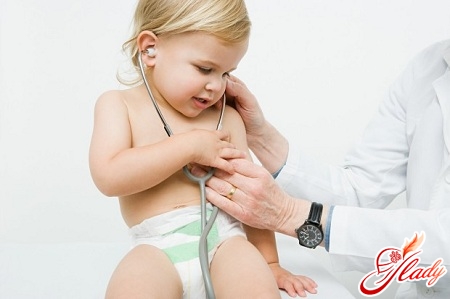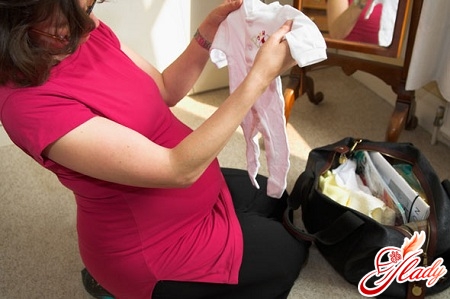 The birth of a child has always been a real mystery. As, however, the conception of the baby, and its intrauterine development. And it is not surprising that future parents have many reasons for concern. Of course, first of all for the health of the future baby. Moreover, now the future mothers constantly hear a lot of "horror stories! - from the TV screens, from computer monitors, from "benevolent" neighbors and girlfriends. Fortunately, in most cases, babies appear to be absolutely healthy. But sometimes something happens and the child is born with pathologies. Unfortunately, in about one case, one or another congenital malformation of the fetus, varying in severity, occurs for a thousand pregnancies. There are a variety of anomalies in the development of the fetus - it is almost impossible to list everything. But we will tell you about the most basic of them. Only, please, do not be frightened when reading this article - the risk that you will have a sick little baby, minimal.
The birth of a child has always been a real mystery. As, however, the conception of the baby, and its intrauterine development. And it is not surprising that future parents have many reasons for concern. Of course, first of all for the health of the future baby. Moreover, now the future mothers constantly hear a lot of "horror stories! - from the TV screens, from computer monitors, from "benevolent" neighbors and girlfriends. Fortunately, in most cases, babies appear to be absolutely healthy. But sometimes something happens and the child is born with pathologies. Unfortunately, in about one case, one or another congenital malformation of the fetus, varying in severity, occurs for a thousand pregnancies. There are a variety of anomalies in the development of the fetus - it is almost impossible to list everything. But we will tell you about the most basic of them. Only, please, do not be frightened when reading this article - the risk that you will have a sick little baby, minimal.
Hernias
Hernias occur most often - they arethe most common pathology of the fetus and, fortunately, in most cases, the easiest. To begin with, let us recall what a hernia is the protrusion of internal organs from those cavities, where they should be, under the skin. Integrity of the skin in this case remains intact. Treatment of a hernia can be very different - from massage to serious surgical intervention. It depends on the hernia itself, its location and some other factors - the doctor will objectively assess the condition of the child and choose the optimal treatment, taking into account all available indications.
Dislocation and dysplasia of the hip joint
Almost as often as hernia, in newbornsthere are dislocations and dysplasia of the hip joint. This name was given a pathology, in which the hip joint tissues do not develop enough. If a baby is born with a congenital hip dislocation, the doctor will correct it, and then impose special fixed orthoses - for at least several months. If this measure is not enough, doctors will be forced to resort to surgical intervention. And if doctors diagnose a child with dysplasia of the hip joints, treatment will be prescribed with the help of orthoses, which take the kid's hips aside. If this treatment does not help to cope with the problem, the child will also be shown a surgical operation. Fortunately, in most cases it is possible to cure dysplasia rather quickly. However, of course, parents will need a lot of effort and patience. 
Hare Lip
In the event that there is no fusion of the lateralparts with the middle part of the upper sponge, the general condition of the crumb suffers very much - in particular, sucking is difficult. Non-diversion can be either one-sided or two-sided. Fortunately, to date, the cleft lip is not an unavoidable problem - in the first few weeks the crumbs will have an operation that will remove this defect. Moreover - as a rule, the skill of surgeons is so high that in most cases even traces from the operation do not remain.
Cleft palate
In some cases, insufficient fusion occursjaw and hard palate. As a result - the cavity of the nose and mouth are connected by a cleft. The wolf's mouth and hare's lips are pathologies that often go hand in hand. The child is deprived of the opportunity to fully breathe and suck. This defect is also eliminated surgically .. But unlike the previous pathology, the child is under the supervision of a doctor almost all his life. By the way, the dentist will be your child's best friend about 16 years old. If the operation is carried out qualitatively, the appearance of the child will not be significantly affected - there will be several inconspicuous thin scars.
Polydactyly
Polydactyly is a multitude. Simply put, on the handles or legs of a newborn child there is an extra finger. By the way, the frequency of such an anomaly is very, very high - about one in three hundredths of a crumb. Of course, this can not but upset the parents, who generally tend to exaggerate the problems. But this defect is eliminated very quickly - the simplest surgical operation, which lasts only a few minutes, a small rehabilitation period and a finger does not remain a trace. by the way, very many parents prefer to leave everything as is. Of course, it's up to you, but doctors strongly recommend that you delete it.
Congenital heart defect
Telling about congenital pathologies of the fetus,one can not fail to mention such an affliction as heart defects. They can be very different - but the essence remains the same: during intrauterine development for one reason or another, the septum of the heart is formed incorrectly. For example, there is no normal infection of the interventricular or interatrial septum, or even after the appearance of crumbs, a number of circulatory features that are inherent in intrauterine development remain. The degree of severity of heart defects can be very different - this depends on the treatment. In some cases, if the defects are not very significant, the doctor may decide to just watch the baby - very often as the child grows, the malformation disappears without outside interference. But the kids with serious defects were less fortunate - they are undergoing surgical operations, and very serious ones. But we hurry to calm our parents - fortunately, for the time being such operations in most cases are very successful. 
Risk groups
Doctors, based on long-term observations, identifiedpeculiar "risk groups". Of course, if you fall into one of these groups, do not despair - it does not mean that your crumbs will have those or other pathologies. But it's still worth consulting with a geneticist.
- Hereditary factor
Especially attentive should be those parents,who were already born children with these or other pathologies. In addition, family history is important - sisters and brothers, uncles and aunts, grandparents. If at least one of them is faced with genetic pathologies, the risk increases at times.
- Previous unsuccessful pregnancies
It is worthwhile to be alerted to those couples whoprevious pregnancies ended unsuccessfully - miscarriage or, even worse, the birth of a dead baby. Of course, this can be just a tragic accident, but you do fall into the risk group.
- Relationship between spouses
In the event that the parents of the future babyare related - even in the distant (second-coused brothers and sisters), the risk of the birth of a child suffering from this or that pathology is very, very great. It's not for nothing that genetics are categorically against related marriages.
- Age of parents
Not the least role is played by the age of parents - inIf a woman is more than 35 years old, and a man is more than 50, the probability of appearance of a crumb with pathologies is higher than that of a younger age group. That is why it is not recommended to delay too much with the birth of a child. And if so happened, it is mandatory to visit a geneticist.
- Harmful production
Also, extreme caution should be shown andthose parents who work in harmful conditions. And so the future mother's working conditions and do need to change! All the adverse factors directly affect the development of the fetus. And pay attention - the laying of the most important vital organs occurs precisely in the early stages of pregnancy, when a woman still does not suspect her situation. Therefore, if the pregnancy is desired and planned, it is better to take care of this issue in advance. And by the way! Do not forget about such a concept as "easy" work. As soon as you find out about your pregnancy, go to the doctor-gynecologist for help. After providing this certificate at work, you will be required by law to be transferred to lighter conditions.
What if the baby was born with a pathology?
As mentioned above, to anticipate the appearance oflight kid with a pathology can. But to prevent it - alas - no. Of course, the birth of such a baby is a kind of shock for parents. And how strong this shock will be, depends on the severity of the blemish - from easy distraction to deep shock. But life goes on and you need your baby. Therefore, you need to come to yourself as soon as possible. The best way out, of course, is to visit a psychologist. But if there is no such possibility, it is necessary to take yourself in hand independently. And it is very important to remember a simple truth - your child is no worse than other kids. He's just different! Come to yourself? Well, great. Now, take care of your child's health! Fortunately, in most cases, the doctors of the maternity hospital take all the necessary measures themselves, including by inviting the necessary little ones to the baby. But you still need to keep this issue under control. And remember that before taking any decision regarding the treatment of a child, it is worth listening to the opinions of at least two different specialists. In addition, do not forget about the need to visit all the same geneticist. We wish good health to your baby! We advise you to read:









